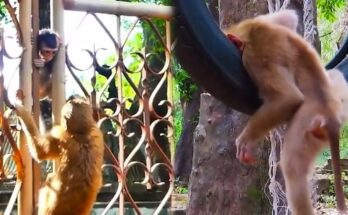The Hadzabe, an indigenous hunter-gatherer community of northern Tanzania, live in close connection with nature. Residing around Lake Eyasi, they inhabit dry woodland and savanna forests, relying entirely on their environment for survival. Unlike many modern societies, the Hadzabe do not farm or keep livestock. Their food is gathered from the wild, including roots, fruits, honey, and wild animals. One of the primary sources of meat in their diet comes from hunting monkeys.
Monkeys are abundant in the forests where the Hadzabe live, making them a practical and accessible source of protein. Using handmade bows and poisoned arrows crafted from natural ingredients, Hadzabe hunters track and skillfully bring down monkeys in the trees. This hunting requires deep knowledge of animal behavior, silence, patience, and remarkable accuracy.
While monkeys are indeed a significant source of meat, it is not accurate to say it is their only meat. The Hadzabe also hunt other small game such as birds, dik-diks (a small type of antelope), and occasionally larger animals when the opportunity arises. However, monkeys remain a consistent and culturally important part of their diet due to their availability.
The Hadzabe’s diet reflects a sustainable and balanced relationship with nature. They take only what they need, never overhunting, and show deep respect for the environment. This way of life has remained largely unchanged for thousands of years, offering a glimpse into how early human societies may have lived.
While modern pressures are increasingly threatening their traditional lands and lifestyle, the Hadzabe continue to resist assimilation. Their unique culture, including their diet and hunting practices, is not only a survival method but also a testament to the resilience and adaptability of human beings living in harmony with nature.


